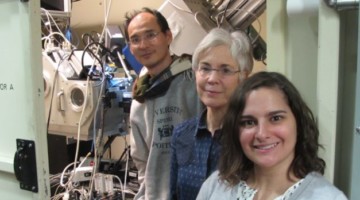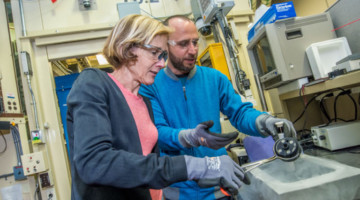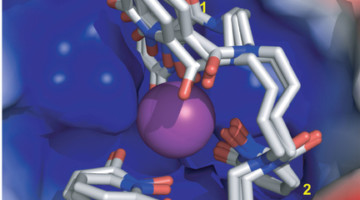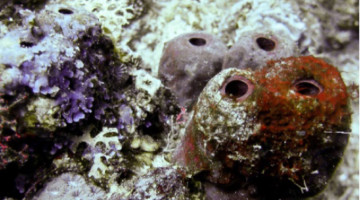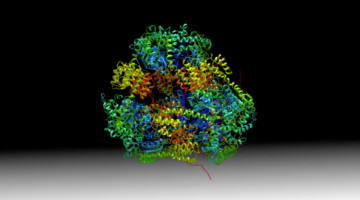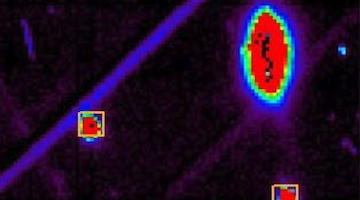A new look inside 2,000-year-old concrete—made from volcanic ash, lime (the product of baked limestone), and seawater—has provided new clues to the evolving chemistry and mineral cements that allow ancient harbor structures to withstand the test of time. Read more »
ALS Work Using Scattering/Diffraction
These techniques make use of the patterns of light produced when x-rays are deflected by the closely spaced lattice of atoms in solids and are commonly used to determine the structures of crystals and large molecules such as proteins.
Researchers ID New Mechanism for Keeping DNA Protein in Line
The actions of a protein used for DNA replication and repair are guided by electrostatic forces known as phosphate steering, a finding that not only reveals key details about a vital process in healthy cells, but provides new directions for cancer treatment research. Read more »
Study Sheds Light on How Bacterial Organelles Assemble
Scientists are providing the clearest view yet of an intact bacterial microcompartment (BMC), revealing the polyhedral structure and assembly of this organelle’s protein shell. Having the full structure can help provide important information in fighting pathogens or bioengineering bacterial organelles for beneficial purposes. Read more »
Protein Complex Shows Promise for Berkelium Separation
Scientists found that the element berkelium breaks form with its heavy-element peers by taking on an extra positive charge when bound to a synthetic organic molecule. This property could help scientists develop better methods for handling and purifying nuclear materials. Read more »
New Evidence for a Water-Rich History on Mars
Mars may have been a wetter place than previously thought, according to experiments on lab-synthesized mineral samples serving as proxies for Martian meteorites. Shock experiments followed by x-ray diffraction studies showed how changes in the minerals could indicate a more water-rich history for the Red Planet. Read more »![]()
![]()
A Systematic Approach to Customizing Cyclic Proteins
Proteins consisting of identical subunits arranged symmetrically around a central axis (cyclic homo-oligomers) play key roles in many biological processes. Researchers have now developed a systematic approach to their design and demonstrated its accuracy using protein crystallography and small-angle x-ray scattering. Read more »
Bacterial Symbiont Sequesters Arsenic and Barium in Sponges
Researchers used x-ray fluorescence, spectroscopy, and diffraction to study how populations of symbiotic bacteria can act as a detox organ in a host with no organs. The bacteria, members of the species Entotheonella, accumulate and mineralize large quantities of arsenic and barium in sponges. Read more »
A Hollow Pyramid Unlocks Principles of Protein Architecture
Researchers have designed a hollow, pyramid-shaped protein with a controllable cavity size that could be useful in the capture and release of smaller compounds. The tools and techniques developed could be useful in analyzing and optimizing designed protein assemblies and understanding their behavior in solution. Read more »
Strain Turns Tin into a 3D Topological Dirac Semimetal
A small amount of compressive strain turns a nonmetallic form of tin into a 3D topological Dirac semimetal—a kind of “supermetal” with very high electron mobility. With its rich topological phase diagram, the material shows promise for both novel physics and eventual device applications. Read more »![]()
![]()
New Insights into Nanoscale Deformation
A group of scientists used Laue x-ray microdiffraction at the ALS to probe plastic deformation mechanisms at the nanoscale. Their findings may overturn conventional theory and reshape our understanding of the mechanical behavior of a host of nanocrystalline metals. Read more »
- « Previous Page
- 1
- …
- 29
- 30
- 31
- 32
- 33
- …
- 39
- Next Page »
